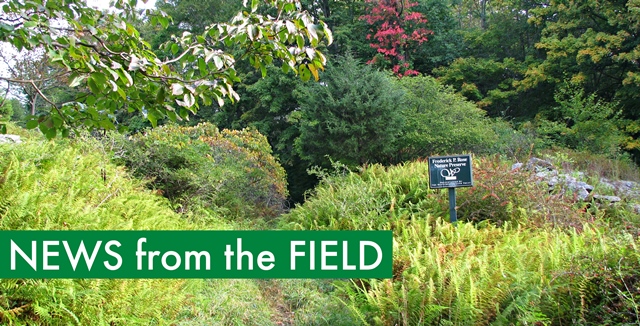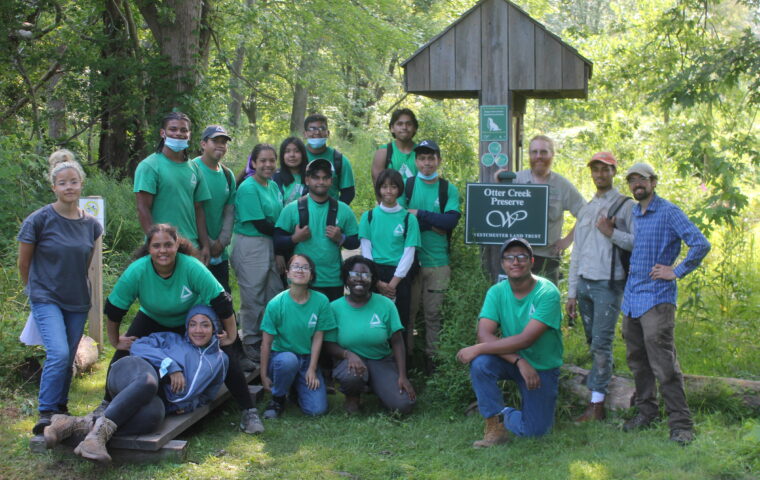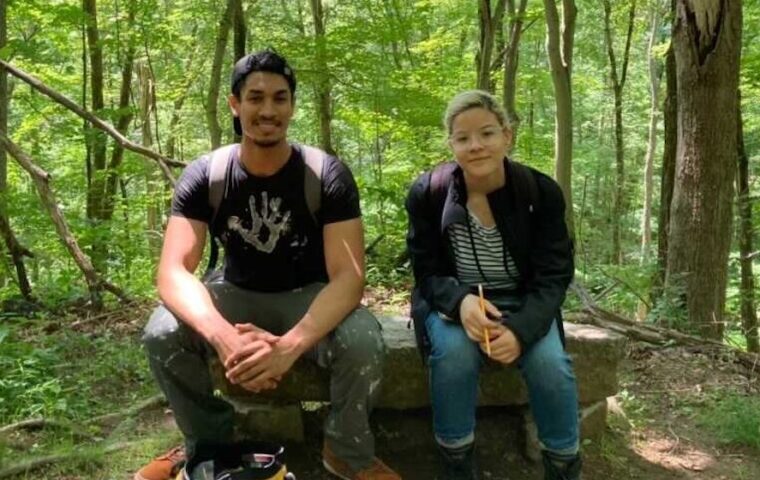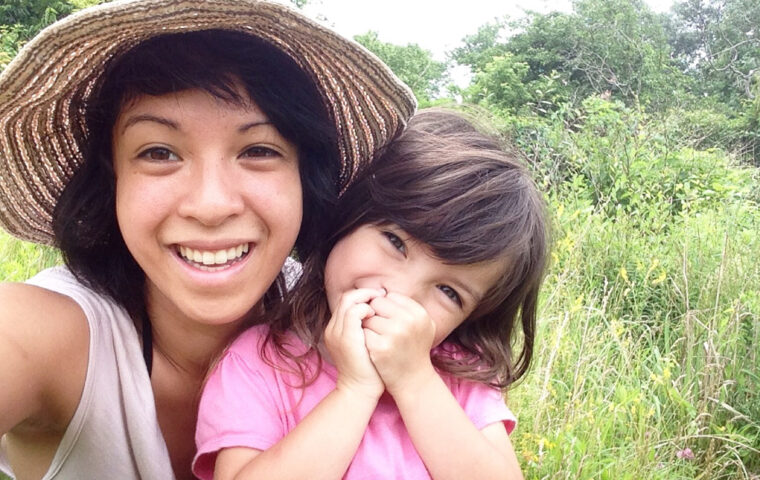
WLTs summer interns, Mike Kaminski & Kristen Gamboa, applied their skills to a dynamic roster of conservation projects in the fields of Landscape Architecture and Plant Ecology.

“These diverse perspectives deepened my understanding of how to craft truly sustainable solutions for each of my assignments this summer.” – Mike Kaminski
Mike Kaminski, a native of Yorktown Heights and a recent graduate of University of Michigan’s School of Natural Resources and Environment, worked on several projects this summer. He designed enhanced parking areas at the Westchester Wilderness Walk/Zofnass Family Preserve (Pound Ridge), the Frederick P. Rose Preserve (Waccabuc), and the Rock Shelter Preserve (Waccabuc) using industry-specific computer programs like AutoCAD, Photoshop, and GIS. Additionally, Mike developed a sustainable landscape design plan for Sugar Hill Farm, WLTs Bedford Hills headquarters. Mike created clear visuals so that WLT can, in turn, transform each of these projects from the conceptual to the buildable. In addition to his extensive design work, Mike researched local building ordinances and permitting requirements and met with various town officials and planners to ensure that his designs would be successfully implemented.
Special thanks to Rusticus Garden Club for their support of our Landscape Architecture Internship.

“Working for nature, rather than against it, is one of the powerful lessons I have learned during my time at WLT. I am truly grateful knowing that this is the field where I belong.” – Kristen Gamboa
Kristen Gamboa, a third-year student at Sterling College, focused her summer internship pursuits on creating a stream corridor management plan and an exhaustive inventory of plant species found at a number of WLT’s public preserves–Westchester Wilderness Walk/Zofnass Family Preserve (Pound Ridge), Frederick P. Rose Preserve (Waccabuc), Rock Shelter Preserve (Waccabuc), and Pine Croft Meadow Preserve (Waccabuc). These surveys were critical, providing WLT’s stewardship team with ecological baselines that best inform future land management decisions.
METHOD: Kristen’s survey at WWW/ZFP was conducted within the newly-erected deer exclosure — a fenced area that keeps deer out so that vegetation within the exclosure can be compared over time with vegetation outside the exclosure. These initial plant inventories allowed WLT to better demonstrate the effects of deer browse on forest vegetation and, hopefully, encourage the return of native plant species.
DISCOVERY: The Baltimore Checkerspot, a threatened butterfly species, was discovered at Pine Croft Meadow Preserve. It is discoveries like these that gave Kristen insight into the unique and ever-changing character of our landscape.
ACTION: Burning bush was found growing amongst native blueberries, huckleberries, and bayberries in the scrub-shrub habitat of the Frederick P. Rose Preserve. Kristen’s thorough on-the-ground analysis ensured a swift intervention to stop the further spread of this pesky invasive.






